
The Macchi C.200 Saetta, or MC.200, was a fighter aircraft developed and manufactured by Aeronautica Macchi in Italy. It was operated in various forms by the Regia Aeronautica who used the type throughout the Second World War.

The Aerfer Sagittario 2 was a prototype all-metal single-seat lightweight fighter aircraft built in Italy by Aerfer, intended to serve as an interceptor or light tactical support aircraft. First flown in 1956, it became the first Italian aircraft to break the sound barrier in controlled flight when it reached Mach 1.1 during a dive from 13,725 m (45,000 ft).
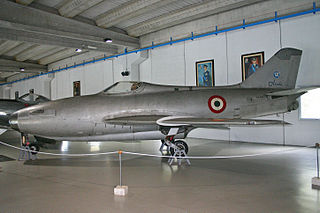
The Aerfer Ariete was a prototype fighter aircraft built in Italy in 1958. It was a refined derivative of the Aerfer Sagittario 2, and was an attempt to bring that aircraft up to a standard where it could be mass-produced as a viable combat aircraft.

The Caproni Ca.133 was a three-engined transport/bomber aircraft used by the Italian Regia Aeronautica from the Second Italo-Abyssinian War until World War II.

The Savoia-Marchetti SM.75 Marsupiale was an Italian passenger and military transport aircraft of the 1930s and 1940s. It was a low-wing, trimotor monoplane of mixed metal and wood construction with a retractable tailwheel undercarriage. It was the last of a line of transport aeroplanes that Alessandro Marchetti began designing in the early 1930s. The SM.75 was fast, robust, capable of long-range flight and could carry up to 24 passengers for 1,000 miles.

The Ambrosini Sagittario was an Italian aerodynamic research aircraft based on the manufacturer's S.7. New swept wings and tail surfaces of wooden construction were fitted to the S.7 fuselage. The wing leading edge was swept at 45 degrees. At first, the S.7's piston engine was retained and the aircraft was known as the Ambrosini S.7 Freccia (Arrow).
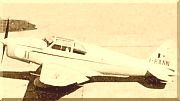
The Ambrosini S.1001 Grifo ("Griffin") was an Italian light airplane that appeared shortly after the end of World War II. The first plane built by SAI Ambrosini postwar, the prototype flew in 1947 and was derived from the pre-war SAI.2S. It was a four-seat monoplane with spatted fixed undercarriage. A small series was produced for the Italian aeroclubs with an Alfa Romeo 110-ter engine of 97 kW (130 hp). Three examples were even bought by the Italian Aeronautica Militare (AMI), which used them between 1948 and 1950.
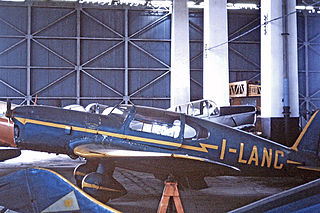
The Ambrosini SAI.2S was a four-seat light aircraft produced in Italy shortly before World War II.

The Ambrosini SAI.3 was a two-seat Italian touring airplane first flown in 1937. It was a low-wing monoplane with a graceful, elliptical wing, and fixed tailwheel undercarriage. Customers could choose between enclosed or open cockpits, and between an inline Alfa Romeo 115 engine or a radial Fiat A.50. A revised version was marketed as the SAI.3S with a smaller-chord wing and a Siemens-Halske Sh 14 radial engine, this offering far superior performance to the original SAI.3 design.

The Ambrosini SAI.10 Grifone ("Griffon") was a military trainer aircraft produced in small numbers for the Italian Regia Aeronautica early in World War II. With the approach of war, the Ministero dell' Aeronautica began a programme to increase the number of pilots available, and ordered a prototype primary trainer from Ambrosini. This aircraft, a parasol monoplane of mixed construction, first flew on July 8, 1939, with Guiliano Ferrari at the controls. A production batch of 50 was ordered, but this was quickly reduced to just 10 machines, all of which were delivered in 1940.
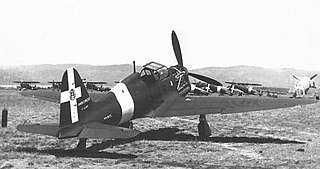
The Ambrosini SAI.207 was a light fighter interceptor built entirely from wood and developed in Italy during World War II. Powered by a single 750 hp Isotta Fraschini Delta, the SAI.207 enjoyed limited success during evaluation of the 12 pre-production aircraft.

The Breda Ba.25 was an Italian two-seat biplane trainer designed and built by the Breda company. It was the most widely used Italian basic trainer of the 1930s.

The Caproni Ca.101 was a three-engine Italian airliner which later saw military use as a transport and bomber. It was designed in 1927 and first flown in 1928.

The Nardi FN.305 was an Italian fighter trainer and liaison monoplane developed by the Fratelli Nardi company.

The Fiat G.46 was a military trainer developed in Italy shortly after World War II.
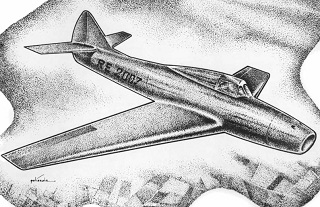
The Reggiane Re.2007 was a purported Italian fighter aircraft concept designed in 1943 by Roberto Longhi.
Sergio Stefanutti (1906–1992) was an Italian engineer who specialized in the design of aircraft.

The Aeronautica Lombarda AL-12P was a Second World War Italian transport glider built by the Aeronautica Lombarda for the Italian Army.
The Isotta Fraschini Beta was an air cooled aircraft engine produced by the Italian engineering company Isotta Fraschini in the 1940s.
The IMAM Ro.26, sometimes called the Romeo Ro.26, was a single-engine biplane trainer aircraft produced by the Italian aeronautical company IMAM in the early 1930s. Only one example was built.


















